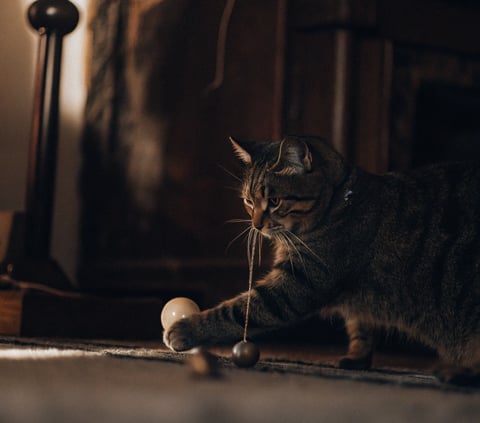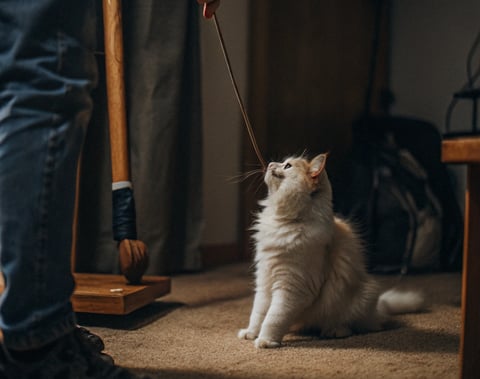Blind cat care
Blind cat care ''Learn how to care for blind cats with our guide on creating safe environments, using sound and scent for guidance, and ensuring their happiness and health''
1/27/20253 min read


Caring for Blind Cats: A Comprehensive Guide
Cats can adapt remarkably well to vision loss, whether they are born blind or lose their sight later in life. With some adjustments and care, blind cats can lead happy, enriching lives. This guide provides tips and advice on how to best care for blind cats and ensure their safety, comfort, and happiness.
Understanding Blindness in Cats
Cats may become blind due to various reasons, including:
Genetic Conditions: Some cats are born blind due to inherited traits.
Infections: Severe eye infections can damage vision.
Injuries: Trauma to the eyes or head can lead to blindness.
Age-Related Issues: Conditions like cataracts or glaucoma are common in older cats.
Signs of blindness include bumping into objects, hesitance in navigating spaces, dilated pupils, and reluctance to explore.


1. Create a Safe and Consistent Environment
Blind cats rely heavily on their other senses, especially touch and smell, to navigate.
Keep Furniture in Place: Avoid rearranging furniture or moving litter boxes and food bowls. This consistency helps them feel secure.
Eliminate Hazards: Cover sharp edges and keep dangerous items like wires or chemicals out of reach.
Use Textures: Different textures (e.g., rugs) can help them map out spaces.


Learn more "Decoding Cat Behavior: What Your Cat’s Actions Really Mean"
2. Use Sound and Smell for Guidance
Blind cats depend on their hearing and sense of smell to navigate and interact with their surroundings.
Interactive Toys: Toys with bells or crinkle sounds are great for playtime.
Verbal Communication: Speak softly to them as you approach so they know where you are.
Scent Markers: Use scents like catnip or lavender to help them identify areas like beds or litter boxes.


Check out ASPCA: Blind Cats and How to Care for Them
3. Feeding and Hydration
Place food and water bowls in an easily accessible and consistent location.
Encourage Exploration: Use fragrant wet food to attract them to their feeding area.
Avoid Moving Bowls: Keep bowls in the same spot to reduce confusion.


4. Litter Box Placement
Blind cats can find litter boxes using scent and memory.
Multiple Boxes: Place litter boxes in easily accessible areas, especially in multi-story homes.
No Strong Scents: Avoid heavily scented litter, as it might overwhelm their sense of smell.


Learn more "How to Prepare Your Cat for a Vet Visit"
5. Encourage Play and Stimulation
Mental and physical stimulation is essential for blind cats to remain happy and healthy.
Noise-Making Toys: Toys with bells, squeakers, or crinkles help blind cats locate and interact with them.
Tactile Toys: Provide toys with different textures for sensory enrichment.
Safe Climbing: Install low, sturdy cat trees or shelves they can explore safely.


6. Routine Vet Care
Blind cats require regular vet checkups to monitor their overall health.
Eye Exams: Ensure any underlying eye condition is being managed.
Diet and Supplements: Discuss with your vet whether any dietary changes or supplements could improve their quality of life.


Check out Cats Protection: Caring for Blind Cats
7. Build Trust and Confidence
Blind cats can feel vulnerable in new situations. Building trust helps them adapt.
Routine is Key: Stick to a consistent daily schedule for feeding and playtime.
Be Patient: Give them time to explore new environments at their own pace.
Offer Reassurance: Speak calmly and reward them with treats when they engage with their surroundings.


Conclusion
Caring for a blind cat is a rewarding experience that requires patience, love, and understanding. By creating a safe and stimulating environment, building trust, and catering to their unique needs, you can ensure your blind cat leads a happy and fulfilling life.
